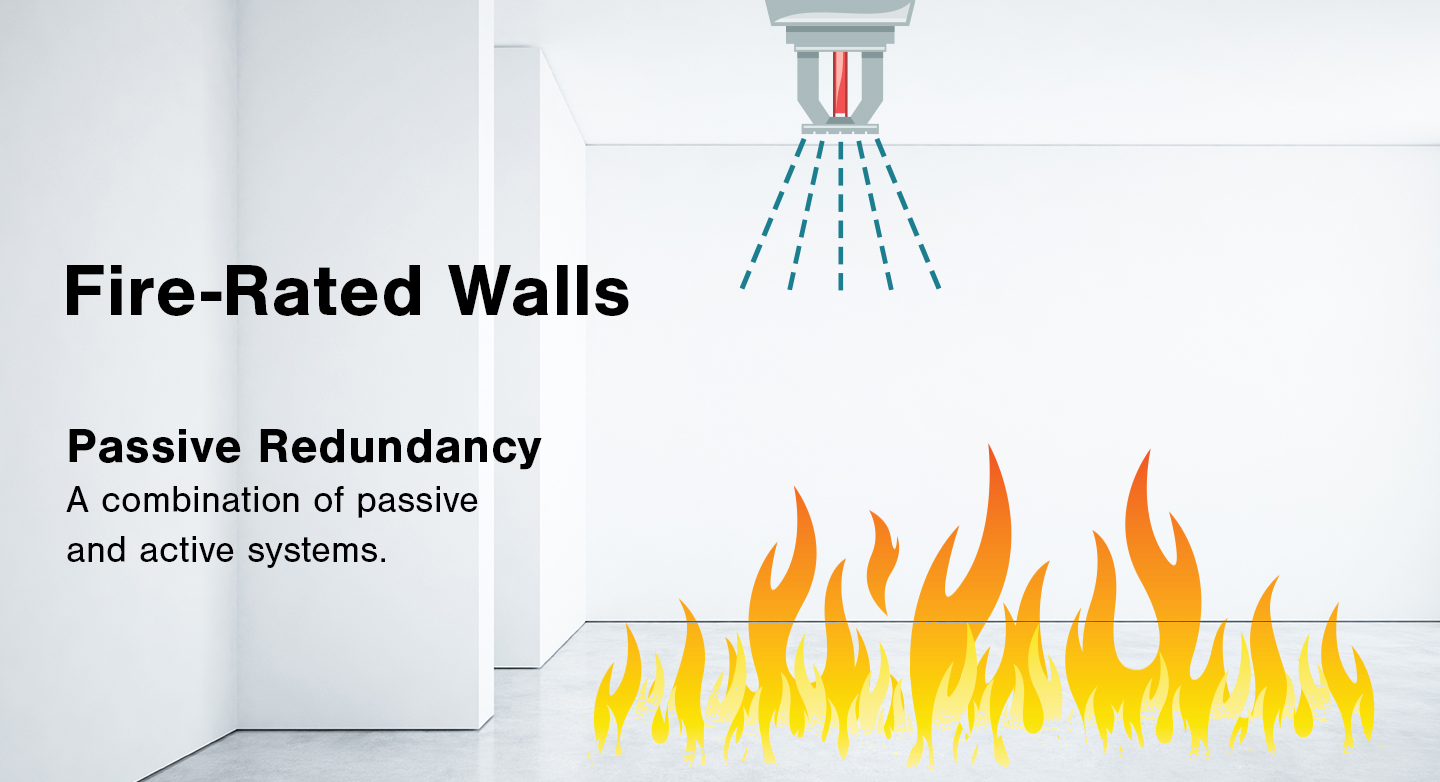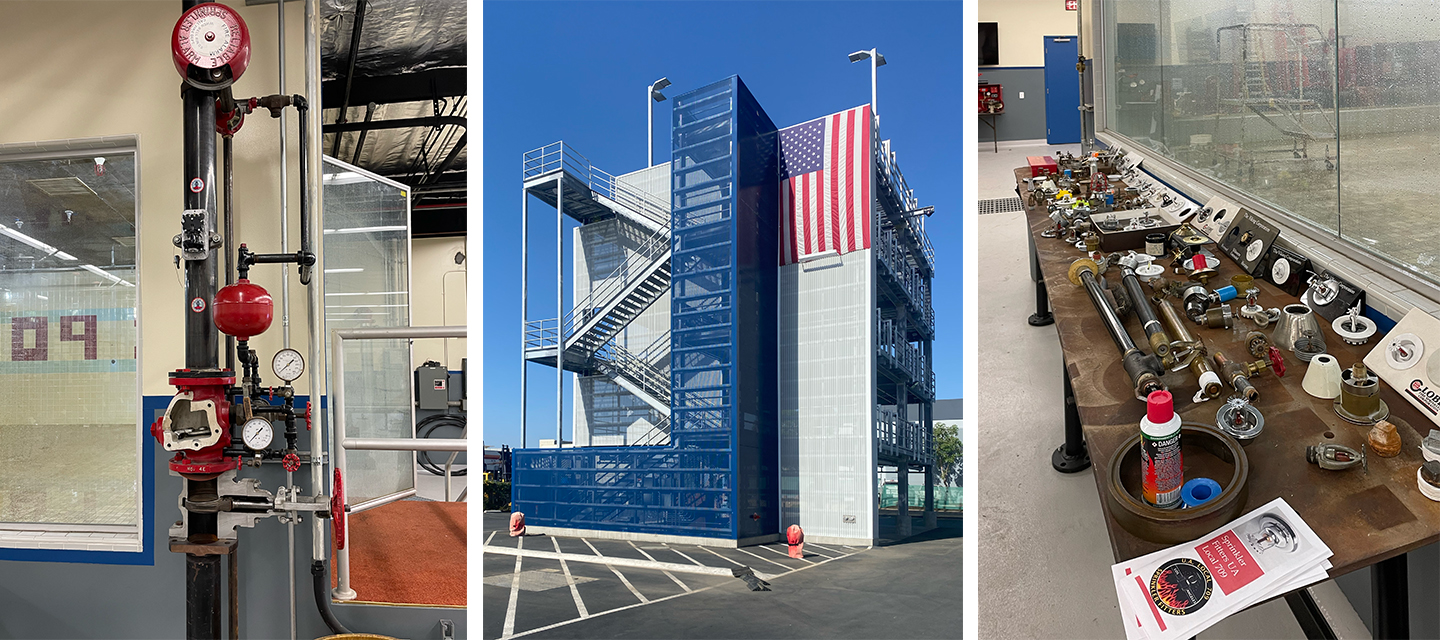Recent training seminars on complementary systems explore the answer.
The fire and life safety of building occupants plays a crucial role in the design and construction of any structure. During a fire event solid fixed walls (passive) and fire extinguishing systems (redundant) work together to prevent the migration of heat, smoke, and toxic substances.

Design and engineering teams routinely combine the products of multiple manufacturers to achieve passive redundancy. Walls, opening protectives, sprinkler systems and all appurtenant components are coordinated through model building codes and fire and life safety standards to ensure optimal protection.
Recently, David Dodge, VP of Business and Code Development, was invited to conduct training seminars for firefighters in Southern California. The topic was Fire Resistance Versus Fire Protection of Passive Rated Walls and Their Openings. The training was well-received. It also resulted in a rare opportunity for Mr. Dodge to see the impact that active redundant fire systems can have when combined with passive protection.

A tour was arranged for him to observe a unique interactive training facility located in Whittier, CA. The facility is sponsored, funded, and maintained by the Sprinkler Fitters U.A. Local 709 and affiliated Locals. This hi-tech training compound is the only one of its kind in the United States! Tradesmen attend classes at night and fire departments conduct self-sponsored training curricula. All industry members are welcome to experience the interactive teaching tools throughout the compound. Full sprinklers systems are not only fabricated and installed by students, the systems are then activated for observation and learning. From fire water pumps to sprinkler heads, the entire water flow system can be viewed again and again.
Firsthand experience of both passive and active systems in action gives new meaning to our current fire and life safety requirements.